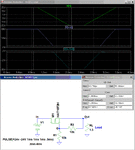Follow along with the video below to see how to install our site as a web app on your home screen.
Note: This feature may not be available in some browsers.

Note that if you can connect the circuit in the ground (negative) lead of the circuit being protected then you can use an N-MOSFET which, due to the higher N material mobility, allows the use of a smaller chip and cheaper device for the same current and ON-resistance rating.